
By Cynthia Unninayar
How did the chance discovery of a gemstone capture the imagination of gem and jewellery enthusiasts, collectors and investors around the world? The answer lies in the unusual characteristics of its colour. Soon after the discovery, this unique stone became known as Paraiba Tourmaline, and news of its exceptionally vivid neon blue to greenish-blue tones quickly travelled the globe. It is truly a gem set apart from the others.
A Bit of History
The story of Paraiba Tourmaline began in 1982 when a Brazilian miner named Heitor Dimas Barbosa discovered a few neon blue stones in the Batalha Mine, near the village of São José da Batalha in the state of Paraiba in north-eastern Brazil. Intrigued, he kept searching and, in 1987, found more. By 1988, the mine was producing gem-quality stones. But, because they were unlike anything on the market at the time, dealers told Barbosa that the stones must be synthetic. Undeterred, the miner had them analysed by the GIA which confirmed that the electric blue gems were natural. At the 1989 gem shows in Tucson, Arizona, “Paraiba Tourmaline” created quite a sensation. It relished an immediate and dramatic rise in popularity along with skyrocketing prices.
A Serendipitous Colour Story
Tourmaline comes in a larger range of colours than possibly any other gemstone. The group includes several complex boron-aluminate silicate minerals whose structures permit the incorporation of almost any chemical element. These trace materials then create different chemical variations in the gem, leading to different minerals and colours. In the case of Paraiba Tourmaline, the trace element copper including varying quantities of manganese, is responsible for Paraiba’s unusual colours. While neon blue and blue-green are the most coveted, other colours range from vibrant green to purple, pink and even multi-coloured shades.
Following the discovery in the Batalha mine, the gem was found in two other areas in a neighbouring state of Brazil. It wasn’t long, though, that the search to find this mesmerising gem in other parts of the world began in earnest.
In the early 2000s, other deposits were discovered, first in Nigeria and then in Mozambique. Today, most of the cuprian (copper-bearing) tourmalines on the global market come from Mozambique. The African gems are chemically the same as the Brazilian stones, but production is greater and more consistent. This led to concerns and passionate discussions about origin and nomenclature since the Brazilians insisted that their stones should be the only ones to take the name “Paraiba.”
So, What’s in a Name?
Following the many controversial debates regarding the use of the term “Paraiba Tourmaline” for non-Brazilian stones, the World Jewellery Confederation (CIBJO) finally weighed in, declaring that green to blue tourmalines coloured by copper and manganese could be called “Paraiba Tourmaline,” regardless of origin. The Laboratory Manual Harmonisation Committee (LMHC), comprised of representatives of seven major gem labs around the world, agreed to follow CIBJO’s nomenclature policy on lab reports. The other colours of the cuprian tourmaline, like purple, pink and multi-colours, are not generally described as Paraiba. Having said that, however, it is not uncommon to see them also labelled as Paraiba Tourmaline.
Because Brazilian gems command higher prices than African stones, the next primary concern became provenance. Could the gem labs determine where the stones were mined? According to an article in GIA’s Gems & Gemology Magazine (Winter 2019), standard gem tests cannot definitively determine whether the stones are from Brazil, Mozambique or Nigeria. Consequently, GIA established sophisticated criteria based on hundreds of samples from known sources from the three countries, which are then compared to the samples undergoing testing. These results can give an accurate determination of geographic origin.
Celebrating Nature’s Artistry
As growing numbers of jewellery lovers, collectors and connoisseurs admire the vivid colours of Paraiba Tourmaline, they also marvel at the natural artistry that has crafted such a remarkable gem. Its origin is a rare symphony of minerals and conditions—a testament to the beauty that nature has created over millions of years. This electric beauty has not gone unnoticed by many celebs who also appreciate the rare gem. A few names who have been spotted wearing the gemstone are Halle Berry, Naomi Watts, Salma Hayek, Katy Perry, Beyoncé, Victoria Beckham and Oprah Winfrey. They, like so many others, all feel Pretty in Paraiba.
All images are courtesy of the designer presented.
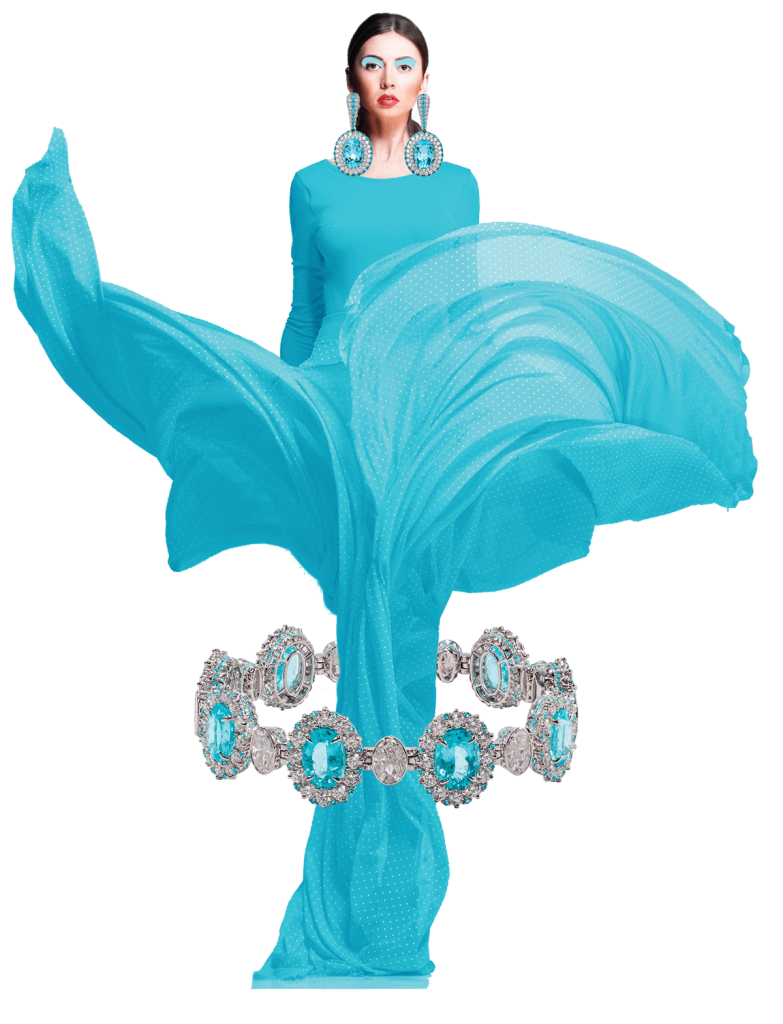
Paraiba Tourmaline’s remarkable neon-blue colour is featured in this pair of 18K gold and diamond earrings by Samuel Sylvio, and this 18K gold and diamond bracelet by Caroline C.

Ring in 18K white gold, featuring Paraiba Tourmaline, diamonds and pearls by Alessio Boschi.

Pendant in platinum featuring an 11.47-carat pear-shaped Paraiba-type tourmaline, accented by round Paraiba tourmalines and round diamonds by Omi Privé.
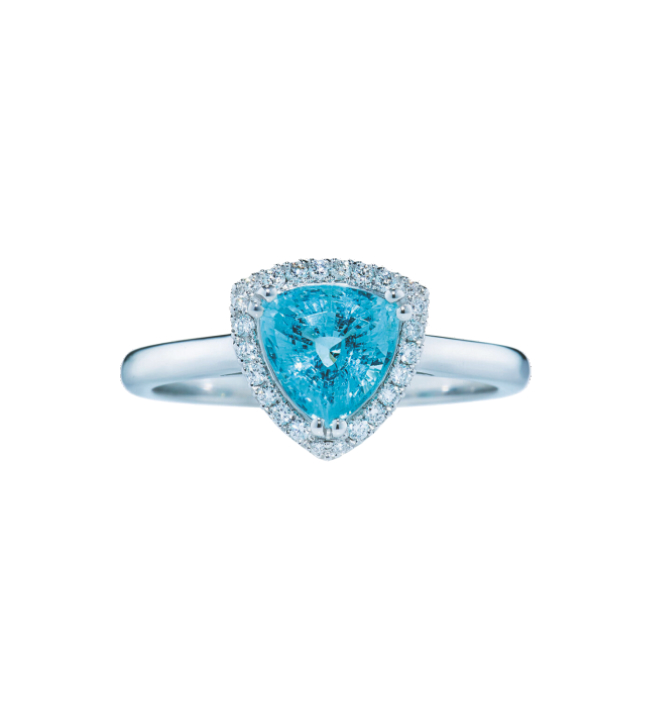
The Eudora Ring in 18K white gold features a 1.28-carat trillion-cut Paraiba Tourmaline, accented by diamonds by Jade Thomas.
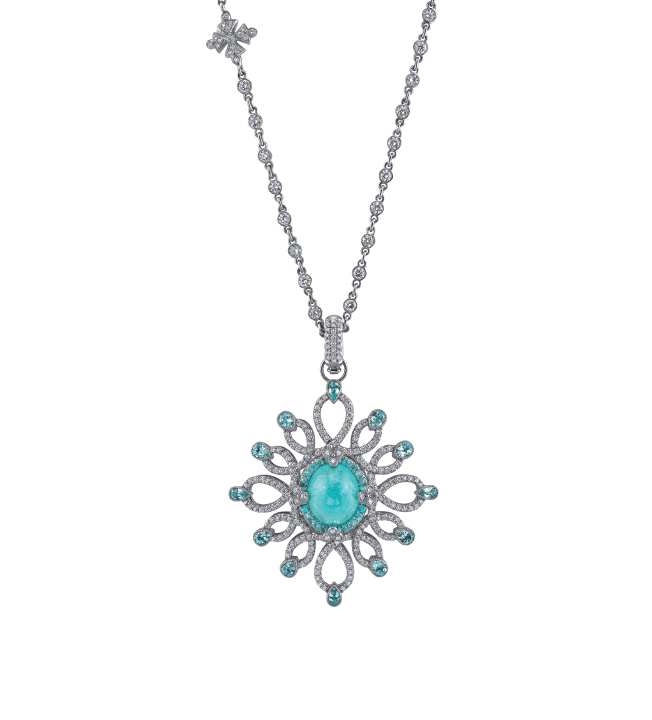
Medusa pendant featuring a 6.19 carat Brazilian Paraiba Tourmaline centre accented by Paraiba Tourmalines and diamonds by Erica Courtney.
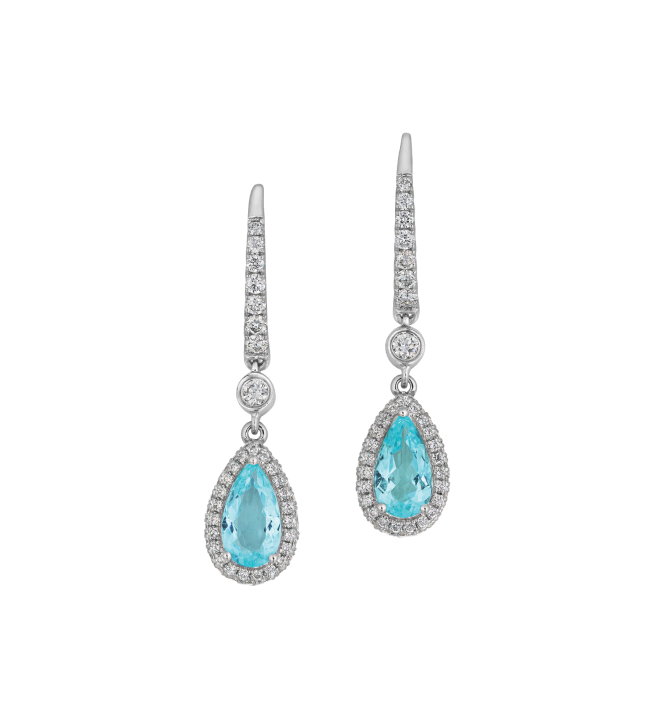
Earrings featuring 0.94 carat Paraiba Tourmaline and diamonds in 18K gold by Philip Zahm.

Paraiba Tourmaline and diamond ring in 18K gold by Elke Berr.
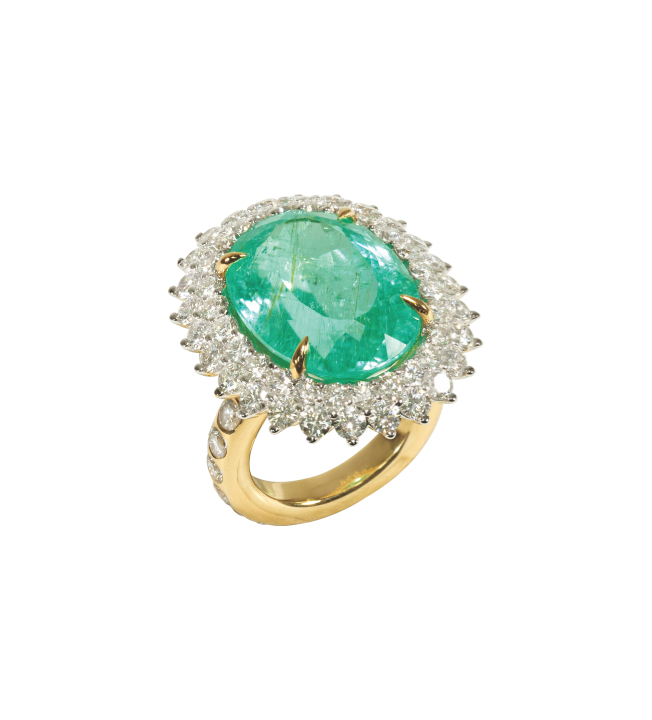
While most Paraiba Tourmaline is thought of as neon blue and blue-green shades, the gem also comes in vivid green tones like this Paraiba Tourmaline ring accented by diamonds in 18K gold by Caroline C.

Mermaid pendant in 18K gold set with Paraiba Tourmaline and diamonds by Ruth Grieco.

Example of a facetted Paraiba Tourmaline and the crystalline form in matrix from Constantin Wild.
Further reading: